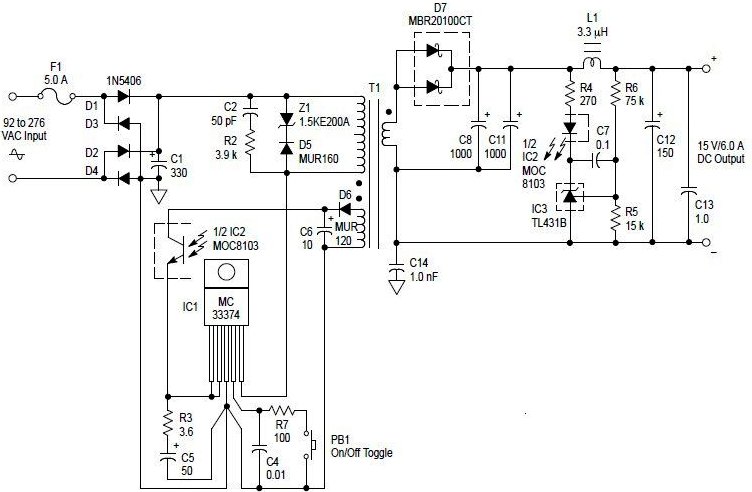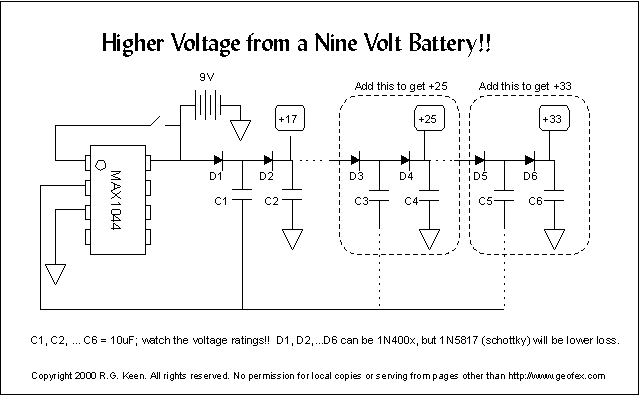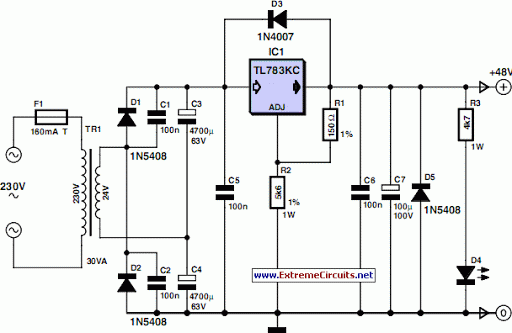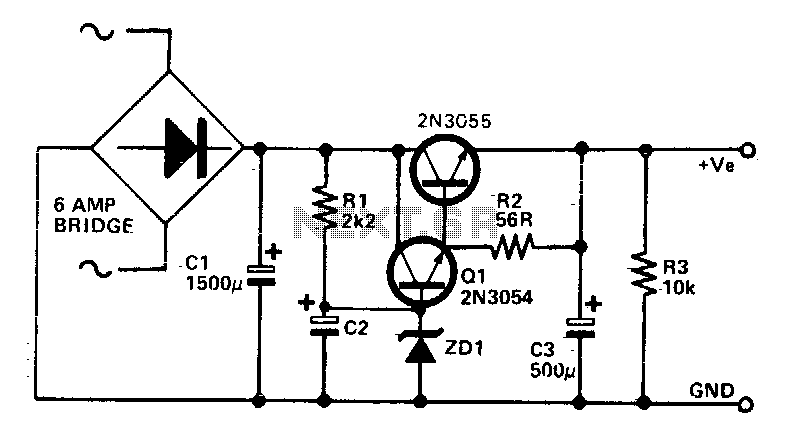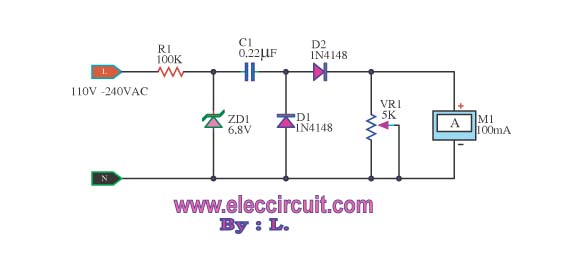
Transformerless Power Supply
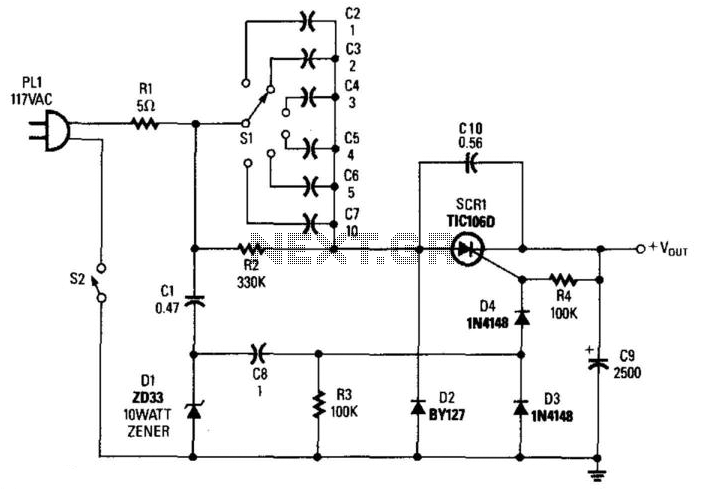
By selecting capacitors, various voltages can be obtained from this supply. Notice that C2 through C7 must be nonpolarized capacitors, such as oil-filled or foil types (Mylar) rated for at least 250 Vac. Warning: This supply is not isolated from the AC mains and presents a serious safety hazard if body contact is made anywhere to this circuit or anything that is powered by it. Use only for applications where contact is avoided or impossible.
The circuit utilizes a series of nonpolarized capacitors (C2 through C7) to derive various output voltages from an AC supply. These capacitors should be of oil-filled or foil type, specifically chosen for their ability to handle high voltages, with a minimum rating of 250 Vac. This specification is critical to ensure safe and reliable operation under typical load conditions.
The configuration of this circuit presents a significant safety risk due to its lack of isolation from the AC mains. It is essential to emphasize that any direct or indirect contact with the circuit or connected devices poses a severe risk of electric shock. Therefore, this circuit should only be employed in environments where contact with live components is either avoided or rendered impossible through design or operational procedures.
In applications utilizing this circuit, appropriate safety measures must be implemented, including the use of insulated enclosures and clear warnings to prevent accidental contact. Users must ensure that all components are rated for the required voltage and that the circuit is operated within its specified limits to maintain safety and functionality. Proper handling and installation practices are paramount to mitigate the inherent risks associated with non-isolated AC circuits. By selecting capacitors, various voltages can be obtained from this supply. Notice that C2 through C7 must be nonpolarized capacitors, such as oil-filled or foil types (Mylar) rated for at least 250 Vac. Warning: This supply is not isolated from the ac mains and presents a serious safety hazard if body contact is made anywhere to this circuit or anything that is powered by it. Use only for applications where contact is avoided or impossible. 🔗 External reference
The circuit utilizes a series of nonpolarized capacitors (C2 through C7) to derive various output voltages from an AC supply. These capacitors should be of oil-filled or foil type, specifically chosen for their ability to handle high voltages, with a minimum rating of 250 Vac. This specification is critical to ensure safe and reliable operation under typical load conditions.
The configuration of this circuit presents a significant safety risk due to its lack of isolation from the AC mains. It is essential to emphasize that any direct or indirect contact with the circuit or connected devices poses a severe risk of electric shock. Therefore, this circuit should only be employed in environments where contact with live components is either avoided or rendered impossible through design or operational procedures.
In applications utilizing this circuit, appropriate safety measures must be implemented, including the use of insulated enclosures and clear warnings to prevent accidental contact. Users must ensure that all components are rated for the required voltage and that the circuit is operated within its specified limits to maintain safety and functionality. Proper handling and installation practices are paramount to mitigate the inherent risks associated with non-isolated AC circuits. By selecting capacitors, various voltages can be obtained from this supply. Notice that C2 through C7 must be nonpolarized capacitors, such as oil-filled or foil types (Mylar) rated for at least 250 Vac. Warning: This supply is not isolated from the ac mains and presents a serious safety hazard if body contact is made anywhere to this circuit or anything that is powered by it. Use only for applications where contact is avoided or impossible. 🔗 External reference
